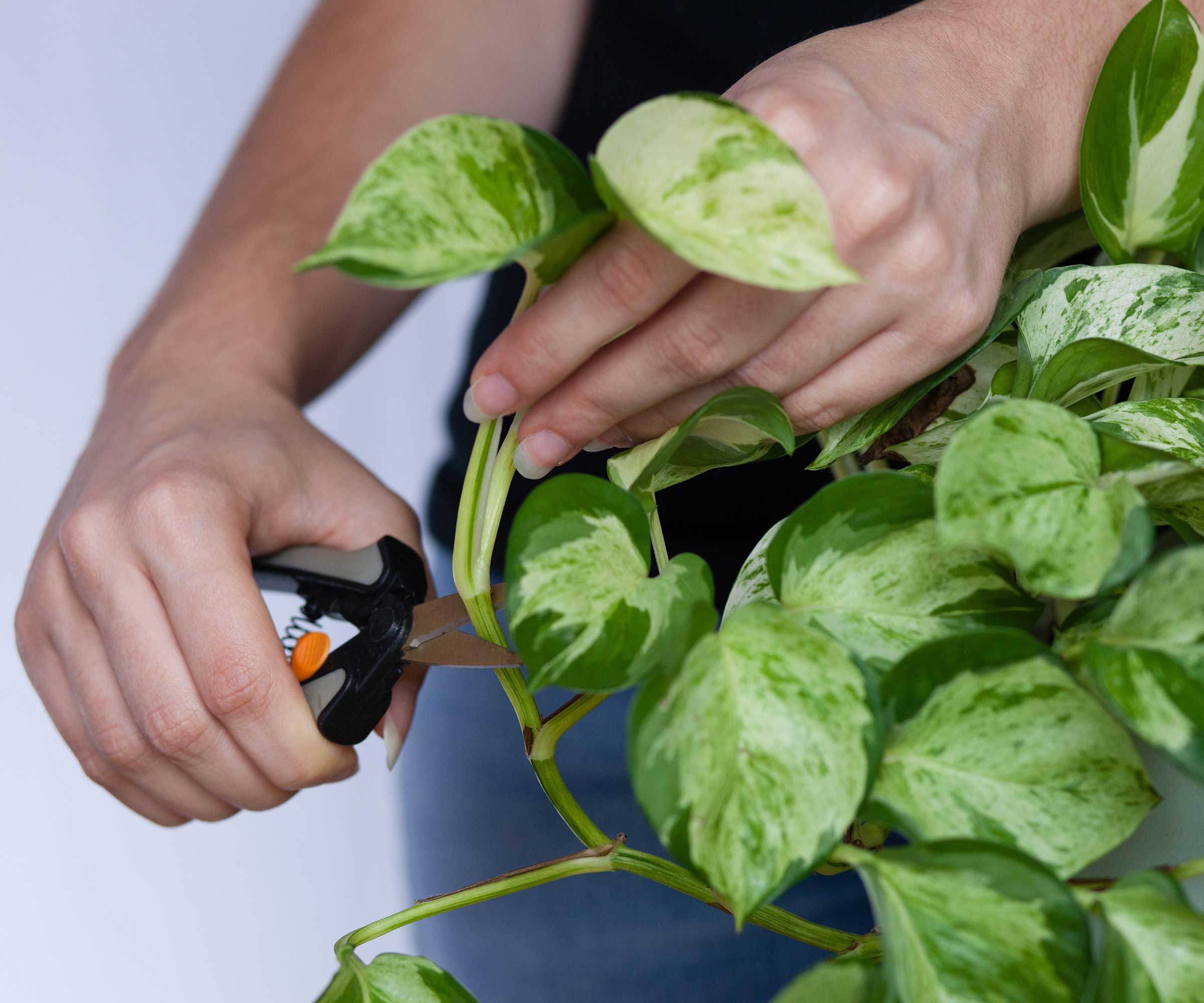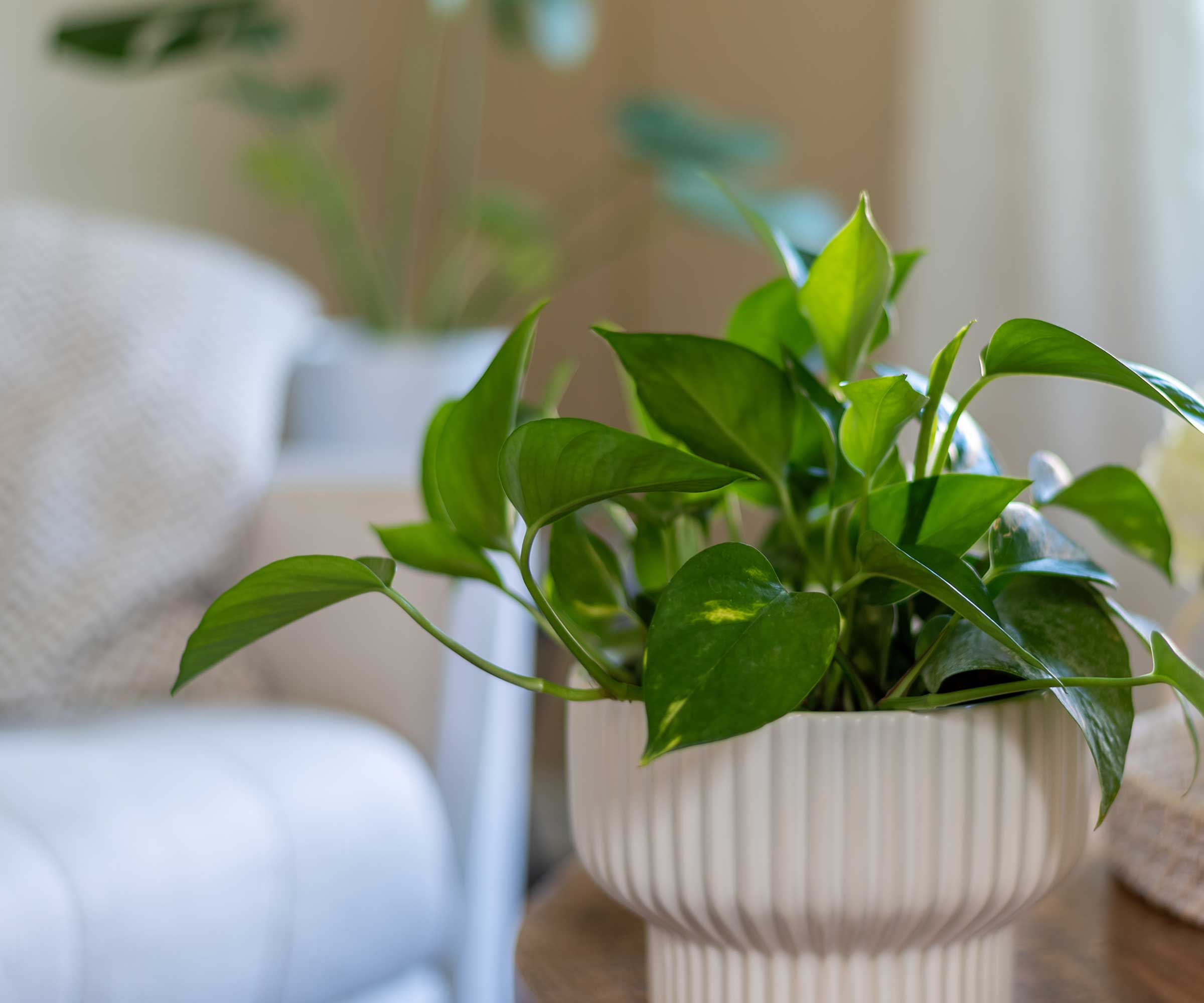
Pothos plants, also known as devil’s ivy or the Rapunzel plant, are great, low-maintenance plants for beginners. They will sit happily on a shelf in a bright, warm location, so happy in fact that before you know it your pothos vines may be touching the floor.
As one of the most popular houseplants, you need to make sure you understand all of the necessary plant care requirements, including pruning.
Pruning is a crucial aspect of maintaining the health and vitality of your pothos plants. There are two main reasons you might want to prune your pothos: to encourage a bushier shape, or to shorten the very long vines that tend to grow. Either way, the steps are the same and our guide will show you how to do it.

5 steps to pruning a pothos plant
Below our experts have shared a step-by-step guide to help keep your pothos flourishing for the new growing season.
1. Gather the right tools

Before you tend to your pothos, you need to prepare yourself with the necessary tools. These are:
- Pruning shears or sharp scissors;
- Disinfectant solution (isopropyl alcohol or a diluted bleach solution);
- Protective gloves, such as these from Amazon to protect your hands
2. Choose the right time

According to Kayla Gajdascz, the founder of Mental Houseplants, the ideal time to prune a pothos is during the growing season, typically in spring or early summer.
This allows the plant to recover quickly and take advantage of the active growth period. Pothos plants do not need to be pruned as much as some other houseplants, but should be monitored if their tendrils get too long.
3. Assess the plant

When looking to prune your pothos it is important to assess the plant before you commit to cutting and clipping away. Examine your pothos plant and identify areas that need attention.
Leggy or overgrown vines are areas that will need to be pruned back. Use your pruning shears or scissors to carefully remove any yellow or damaged leaves. This helps redirect the plant's energy to healthier parts.
If your pothos has long, leggy vines, trim them back to encourage bushier growth. If your pothos has nodes with multiple stems coming out of it, then prune the outer ones to make sure the main stem retains the nutrients.
4. Pinch, prune and propagate

To promote branching and a fuller appearance, pinch off the tips of the vines regularly. How much you prune it back by is completely up to you. If you want to, you can prune it up to 2 inches from the soil line, alternatively you can prune it back less if you prefer longer vines.
Cutting just above a leaf node promotes new growth from these points, especially if your plant has lost leaves over the winter period. This harder pruning encourages lateral growth and results in a more compact, bushier and attractive pothos.
Once pruned, do not let your cuttings go to waste. You can propagate new pothos plants from the cuttings.
‘Set it in a windowsill near direct sunlight, and it will grow new roots in 3-6 weeks,’ says houseplant expert Vladan Nikolic. ‘You can then plant these right back in the same pot with your original pothos, or put them in an entirely new pot and soon you'll have more plants to enjoy or share with friends.’
5. Monitor and adjust

Keep an eye on your pothos after pruning. Adjust your care routine as needed, providing adequate water, light, and nutrients for the best results.
Pothos plants should ideally be only watered once the top 2 inches of soil has dried out. These plants can cope well with less water than other houseplants, and their leaves and foliage will show signs of being underwatered. As spring and summer are the most active growing periods for pothos plants so they will need to be watered more regularly during these seasons. You can also buy self-watering plant pots from Amazon to ensure sufficient watering all year round.
In providing your pothos plant with enough light you can near enough guarantee it will grow full and bushy. Conversely if there is insufficient daylight then your pothos will grow slower and produce smaller leaves.
FAQs
Why is my pothos plant growing huge leaves?
Pothos plants can climb up rope, poles and even other plants. If placed outside in hot climates, or in very humid bright and conditions similar to where they would naturally grow, their leaves will respond by growing larger and lusher.
By following these step-by-step instructions, you'll be able to prune your pothos effectively, promoting a healthier, more vibrant plant. If you have other plants in your collection, our guide on how to prune a jade plant might come in handy.







